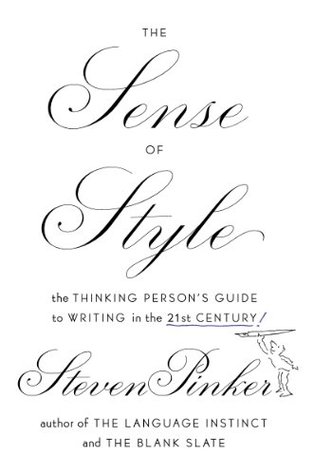More on this book
Community
Kindle Notes & Highlights
Started reading
April 6, 2016
As people age, they confuse changes in themselves with changes in the world, and changes in the world with moral decline—the illusion of the good old
moral panic about the decline of writing may be as old as writing itself:
“good sense” as opposed to “nonsense,” in this case the ability to discriminate between the principles that improve the quality of prose and the superstitions, fetishes, shibboleths, and initiation ordeals that have been passed down in the traditions of usage.
You remember those days, don’t you? Back in the 1980s, when teenagers spoke in fluent paragraphs, bureaucrats wrote in plain English, and every academic paper was a masterpiece in the art of the essay? (Or was it the 1970s?)
The problem with the Internet-is-making-us-illiterate theory, of course, is that bad prose has burdened readers in every era.
Governments and corporations have found that small improvements in clarity can prevent vast amounts of error, frustration, and
Education is an admirable thing,” wrote Oscar Wilde, “but it is well to remember from time to time that nothing that is worth knowing can be
Good writers are avid readers. They have absorbed a vast inventory of words, idioms, constructions, tropes, and rhetorical tricks, and with them a sensitivity to how they mesh and how they clash.
the starting point for becoming a good writer is to be a good reader.
The classic manuals, written by starchy Englishmen and rock-ribbed Yankees, try to take all the fun out of writing, grimly adjuring the writer to avoid offbeat words, figures of speech, and playful alliteration.
Perfecting the craft is a lifelong calling, and mistakes are part of the game. Though the quest for improvement may be informed by lessons and honed by practice, it must first be kindled by a delight in the best work of the masters and a desire to approach their excellence.
We are going to die, and that makes us the lucky ones. Most people are never going to die because they are never going to be born.
A writer, like a cinematographer, manipulates the viewer’s perspective on an ongoing story, with the verbal equivalent of camera angles and quick cuts.
The best words not only pinpoint an idea better than any alternative but echo it in their sound and articulation, a phenomenon called phonesthetics, the feeling of
The authors of the four passages share a number of practices: an insistence on fresh wording and concrete imagery over familiar verbiage and abstract summary; an attention to the readers’ vantage point and the target of their gaze; the judicious placement of an uncommon word or idiom against a backdrop of simple nouns and verbs; the use of parallel syntax; the occasional planned surprise; the presentation of a telling detail that obviates an explicit pronouncement; the use of meter and sound that resonate with the meaning and mood.
Writing is above all an act of pretense.
The key to good style, far more than obeying any list of commandments, is to have a clear conception of the make-believe world in which you’re pretending to communicate.
The purpose of writing is presentation, and its motive is disinterested truth. It succeeds when it aligns language with the truth, the proof of success being clarity and simplicity.
The writer knows the truth before putting it into words; he is not using the occasion of writing to sort out what he thinks.
A writer of classic prose must simulate two experiences: showing the reader something in the world, and engaging her in conversation.
The differences between classic style and other styles can be appreciated by comparing their stances on the communication scenario: how the writer imagines himself to be related to the reader, and what the writer is trying to accomplish.
Writing in classic style, in contrast, takes whatever form and whatever length the writer needs to present an interesting truth. The classic writer’s brevity “comes from the elegance of his mind, never from pressures of time or
Classic style, Thomas and Turner explain, is aristocratic, not egalitarian:
The early bird gets the worm, but the second mouse gets the cheese
Not all prose should be classic, and not all writers can carry off the pretense.
Classic writing, with its assumption of equality between writer and reader, makes the reader feel like a genius. Bad writing makes the reader feel like a dunce.
The confident presentation of an idea in classic style should not be confused with an arrogant insistence that it is correct.
The goal of classic style is to make it seem as if the writer’s thoughts were fully formed before he clothed them in words.
previews that read like a scrunched-up table of contents are there to help the writer, not the reader.
The problem with thoughtless signposting is that the reader has to put more work into understanding the signposts than she saves in seeing what they point to, like complicated directions for a shortcut which take longer to figure out than the time the shortcut would save.
If you’re not comfortable using an expression without apologetic quotation marks, you probably shouldn’t be using it at all.
unmodified adjectives and nouns tend to be interpreted categorically:
As soon as you add an intensifier, you’re turning an all-or-none dichotomy into a graduated scale.
These are metaconcepts: concepts about concepts. They serve as a kind of packing material in which academics, bureaucrats, and corporate mouthpieces clad their subject matter.
guidelines on how to avoid legalese and other turbid professional styles call for using first- and second-person pronouns, inverting passives into actives, and letting verbs be verbs rather than zombie nouns.


